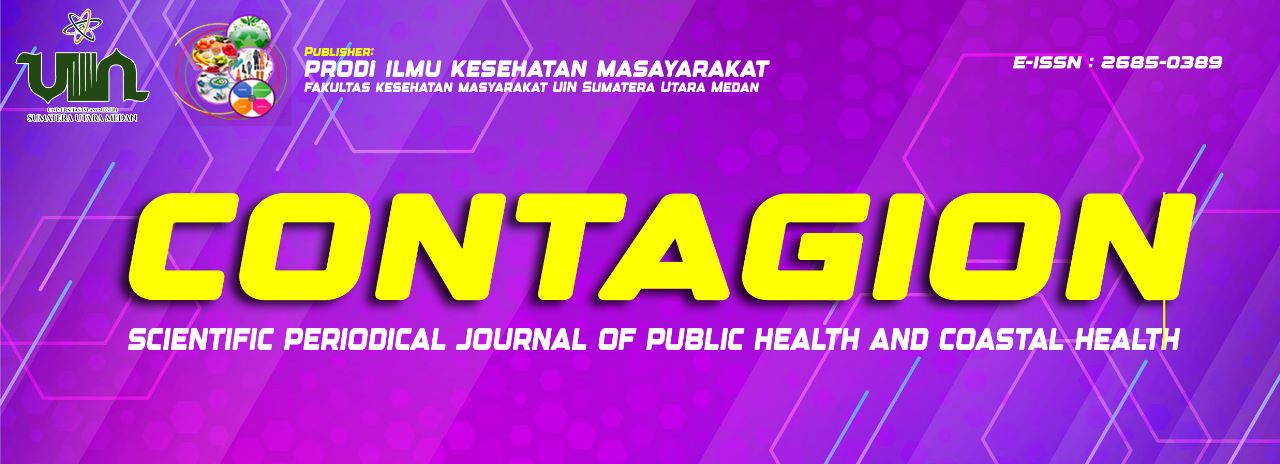The Anti-Inflammatory Potential of Statins in Oncology: A Focus on C-Reactive Protein (CRP), Interleukin-6 (IL-6), and Tumor Necrosis Factor-Alpha (TNF-α) Modulation
Abstract
Statins, widely known for their cholesterol-lowering effects, have demonstrated promising therapeutic potential in modulating chronic inflammation, a pivotal contributor to cancer progression. Elevated inflammatory biomarkers, including C-reactive protein (CRP), interleukin-6 (IL-6), and tumor necrosis factor-alpha (TNF-α) are frequently observed cancer patients and are associated with unfavorable prognoses. This narrative review synthesizes findings from 42 recent publications (2019–2024) retrieved via PubMed, Scopus, and Web of Science, focusing on statins’ impact on these biomarkers in oncologic contexts. The studies encompass both preclinical and clinical investigations examining statin type, dosage, cancer subtype, biomarker modulation, and synergy with conventional therapies. Findings indicate that lipophilic statins, such as simvastatin and atorvastatin, substantially reduce IL-6 and TNF-α levels by inhabiting the mevalonate pathway and RhoA activation, thereby downregulating transcription factors such as NF-κB. These downstream effects indirectly contribute to CRP suppression. Additionally, statins have demonstrated the capacity to enhance the efficacy of chemotherapeutic agents, particularly platinum compounds, doxorubicin, and taxanes, by sensitizing tumor cell sensitivity, reducing resistance, and promoting apoptosis. Despite these encouraging outcomes, most data derive from preclinical studies and small-scale clinical trials, often lacking standardized effect size reporting and longitudinal clinical endpoints. This review concludes that statins may serve as effective adjunctive agents in oncology through their anti-inflammatory properties. However, large-scale randomized controlled trials are essential to establish their long-term clinical utility, safety profile, and optimal application in cancer treatment
Keyword: Statins, Cancer, Inflammation, IL-6, C-reactive protein
Full Text:
PDFReferences
Althanoon, Z., Faisal, I. M., Ahmad, A. A., & Merkhan, M. M. (2020). Pharmacological aspects of statins are relevant to their structural and physicochemical properties. Systematic Reviews in Pharmacy, 11(7), 167–171. https://doi.org/10.31838/srp.2020.7.27
Basith, S., Manavalan, B., Yoo, T. H., Kim, S. G., & Choi, S. (2012). Roles of toll-like receptors in cancer: A double-edged sword for defense and offense. Archives of Pharmacal Research, 35(8), 1297–1316. https://doi.org/10.1007/s12272-012-0802-7
Bugos, C. (2023). Statins Can Cut Colorectal Cancer Risk in Ulcerative Colitis Patients , Study Finds Statins May Reduce Colorectal Cancer Risk and Death. Very Well Health. https://www.verywellhealth.com/statins-reduces-colorectal-cancer-risk-study-7971785?utm_source=chatgpt.com
Emran, T. Bin, Shahriar, A., Mahmud, A. R., Rahman, T., Abir, M. H., Siddiquee, M. F. R., Ahmed, H., Rahman, N., Nainu, F., Wahyudin, E., Mitra, S., Dhama, K., Habiballah, M. M., Haque, S., Islam, A., & Hassan, M. M. (2022). Multidrug Resistance in Cancer: Understanding Molecular Mechanisms, Immunoprevention and Therapeutic Approaches. Frontiers in Oncology, 12(June), 1–38. https://doi.org/10.3389/fonc.2022.891652
Gallo, L. H. (2021). FGFR1, a novel biomarker for metastatic castration-resistant prostate cancer? Oncotarget, 12(11), 1026–1028. https://doi.org/10.18632/oncotarget.27957
Hamzawy, M., Gouda, S. A. A., Rashid, L., Attia Morcos, M., Shoukry, H., & Sharawy, N. (2017). The cellular selection between apoptosis and autophagy: roles of vitamin D, glucose and immune response in diabetic nephropathy. Endocrine, 58(1), 66–80. https://doi.org/10.1007/s12020-017-1402-6
Jiang, W., Hu, J. W., He, X. R., Jin, W. L., & He, X. Y. (2021). Statins: a repurposed drug to fight cancer. Journal of Experimental and Clinical Cancer Research, 40(1), 1–33. https://doi.org/10.1186/s13046-021-02041-2
Koushki, K., Shahbaz, S. K., Mashayekhi, K., Sadeghi, M., Zayeri, Z. D., Taba, M. Y., Banach, M., Al-Rasadi, K., Johnston, T. P., & Sahebkar, A. (2021). Anti-inflammatory Action of Statins in Cardiovascular Disease: the Role of Inflammasome and Toll-Like Receptor Pathways. Clinical Reviews in Allergy and Immunology, 60(2), 175–199. https://doi.org/10.1007/s12016-020-08791-9
Maryam, S., Krukiewicz, K., Haq, I. U., Khan, A. A., & Yahya, G. (2023). Interleukins (Cytokines) as Biomarkers in Colorectal Cancer: Progression, Detection, and Monitoring. Journal of Clinical Medicine, 12(2), 1–32. https://www.ncbi.nlm.nih.gov/pmc/articles/PMC10179696/
Möller, M., Orth, V., Umansky, V., Hetjens, S., Braun, V., Reißfelder, C., Hardt, J., & Seyfried, S. (2024). Myeloid-derived suppressor cells in peripheral blood as predictive biomarkers in patients with solid tumors undergoing immune checkpoint therapy: systematic review and meta-analysis. Frontiers in Immunology, 15(May). https://doi.org/10.3389/fimmu.2024.1403771
Murphy, C., Deplazes, E., Cranfield, C. G., & Garcia, A. (2020). The role of structure and biophysical properties in the pleiotropic effects of statins. International Journal of Molecular Sciences, 21(22), 1–29. https://doi.org/10.3390/ijms21228745
Nickel, C. H., Kellett, J., Cooksley, T., Lyngholm, L. E., Chang, S., Imfeld, S., Bingisser, R., & Brabrand, M. (2021). The Diagnoses and Outcomes of Emergency Patients With an Elevated D-Dimer Over the Next 90 Days. American Journal of Medicine, 134(2), 260-266.e2. https://doi.org/10.1016/j.amjmed.2020.06.009
Obeagu, E. I. (2025). Neutrophils in HIV pathogenesis: dual roles, clinical implications, and therapeutic frontiers. Annals of Medicine & Surgery, 0. https://doi.org/10.1097/ms9.0000000000003474
Park, J. H., Mortaja, M., Son, H. G., Zhao, X., Sloat, L. M., Azin, M., Wang, J., Collier, M. R., Tummala, K. S., Mandinova, A., Bardeesy, N., Semenov, Y. R., Mino-Kenudson, M., & Demehri, S. (2024). Statin prevents cancer development in chronic inflammation by blocking interleukin 33 expression. Nature Communications, 15(1), 1–15. https://doi.org/10.1038/s41467-024-48441-8
Pun, N. T., & Jeong, C. H. (2021). Statin as a potential chemotherapeutic agent: Current updates as a monotherapy, combination therapy, and treatment for anti-cancer drug resistance. Pharmaceuticals, 14(5). https://doi.org/10.3390/ph14050470
Rajasegaran, T., How, C. W., Saud, A., Ali, A., & Lim, J. C. W. (2023). Targeting Inflammation in Non-Small Cell Lung Cancer through Drug Repurposing. Pharmaceuticals, 16(3). https://doi.org/10.3390/ph16030451
Sabeel, S., Motaung, B., Nguyen, K. A., Ozturk, M., Mukasa, S. L., Wolmarans, K., Blom, D. J., Sliwa, K., Nepolo, E., Günther, G., Wilkinson, R. J., Schacht, C., Kengne, A. P., Thienemann, F., & Guler, R. (2025). Impact of statins as immune-modulatory agents on inflammatory markers in adults with chronic diseases: A systematic review and meta-analysis. Plos One, 20(5 May). https://doi.org/10.1371/journal.pone.0323749
Scott, O. W., Tin Tin, S., Cavadino, A., & Elwood, J. M. (2025). Statin use and breast cancer-specific mortality and recurrence: a systematic review and meta-analysis including the role of immortal time bias and tumour characteristics. British Journal of Cancer, February 2024, 1–16. https://doi.org/10.1038/s41416-025-03070-w
Wadhwa, K., Pahwa, R., Kumar, M., Kumar, S., Sharma, P. C., Singh, G., Verma, R., Mittal, V., Singh, I., Kaushik, D., & Jeandet, P. (2022). Mechanistic Insights into the Pharmacological Significance of Silymarin. Molecules, 27(16), 1–50. https://doi.org/10.3390/molecules27165327
Wang, Y. (2019). Lung Inflammation in Health and Disease , Volume II Advances in Experimental Medicine: Vol. II (Issue April 2021). https://doi.org/10.1007/978-3-030-63046-1
Wang, Z., Wu, P., Wu, D., Zhang, Z., Hu, G., Zhao, S., Lai, Y., & Huang, J. (2015). Prognostic and clinicopathological significance of serum interleukin-6 expression in colorectal cancer: A systematic review and meta-analysis. OncoTargets and Therapy, 8, 3793–3801. https://doi.org/10.2147/OTT.S93297
Xiang, Y., Zhang, M., Jiang, D., Su, Q., & Shi, J. (2023). The role of inflammation in autoimmune disease: a therapeutic target. Frontiers in Immunology, 14(October), 1–33. https://doi.org/10.3389/fimmu.2023.1267091
Yu, M., Yu, H., Wang, H., Xu, X., Sun, Z., Chen, W., Yu, M., Liu, C., Jiang, M., & Zhang, X. (2024). Tumor‑associated macrophages activated in the tumor environment of hepatocellular carcinoma: Characterization and treatment (Review). International Journal of Oncology, 65(4), 1–24. https://doi.org/10.3892/ijo.2024.5688
Zhao, H., Wu, L., Yan, G., Chen, Y., Zhou, M., Wu, Y., & Li, Y. (2021). Inflammation and tumor progression: signaling pathways and targeted intervention. Signal Transduction and Targeted Therapy, 6(1). https://doi.org/10.1038/s41392-021-00658-5
Zhu, P. F., Wang, M. X., Chen, Z. L., & Yang, L. (2021). Targeting the Tumor Microenvironment: A Literature Review of the Novel Anti-Tumor Mechanism of Statins. Frontiers in Oncology, 11(November), 1–11. https://doi.org/10.3389/fonc.2021.761107
Zubor, P., Dankova, Z., Kolkova, Z., Holubekova, V., Brany, D., Mersakova, S., Samec, M., Liskova, A., Koklesova, L., Kubatka, P., Bujnak, J., Kajo, K., Mlyncek, M., Giordano, F. A., & Golubnitschaja, O. (2020). RHO gtpases in gynecologic cancers: In-depth analysis toward the paradigm change from reactive to predictive, preventive, and personalized medical approach benefiting the patient and healthcare. Cancers, 12(5). https://doi.org/10.3390/cancers12051292
DOI: http://dx.doi.org/10.30829/contagion.v7i2.24115
Refbacks
- There are currently no refbacks.
Copyright (c) 2025 Ariosta Ariosta, Banundari Rahmawati, Udin Bahrudin, Angela Kho

This work is licensed under a Creative Commons Attribution-ShareAlike 4.0 International License.






